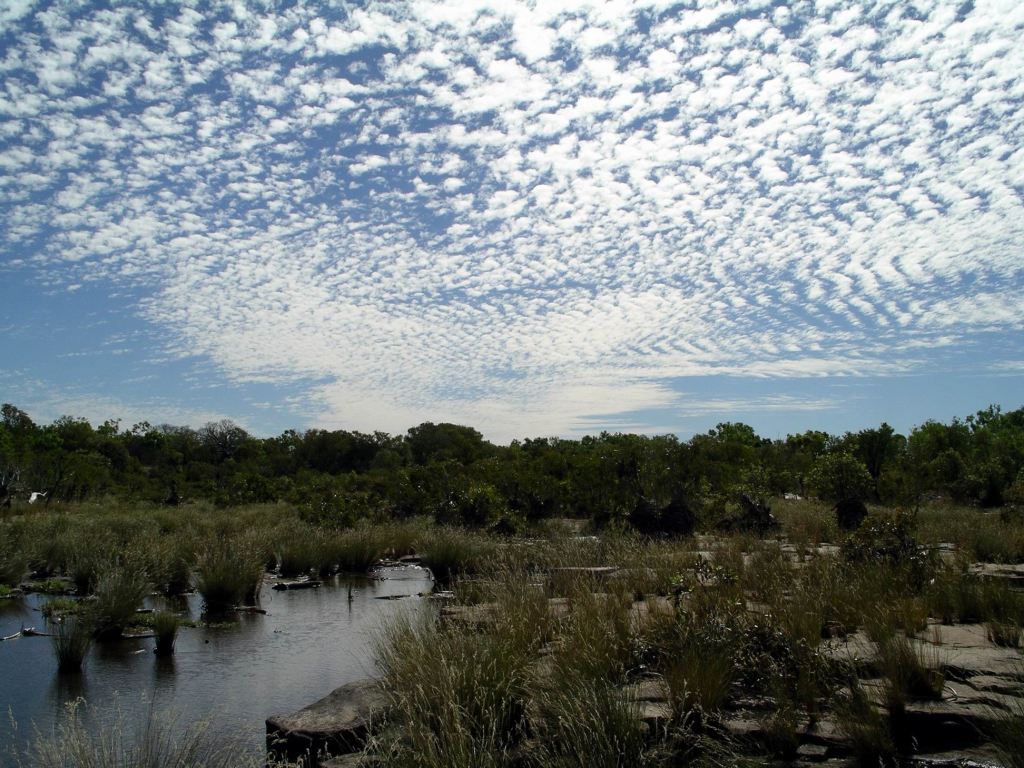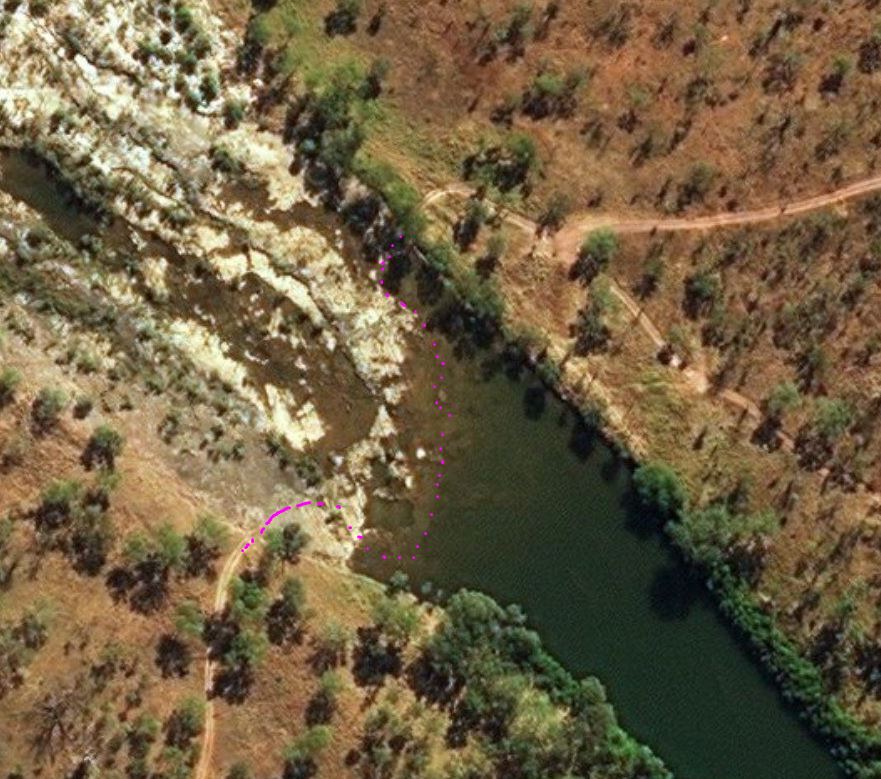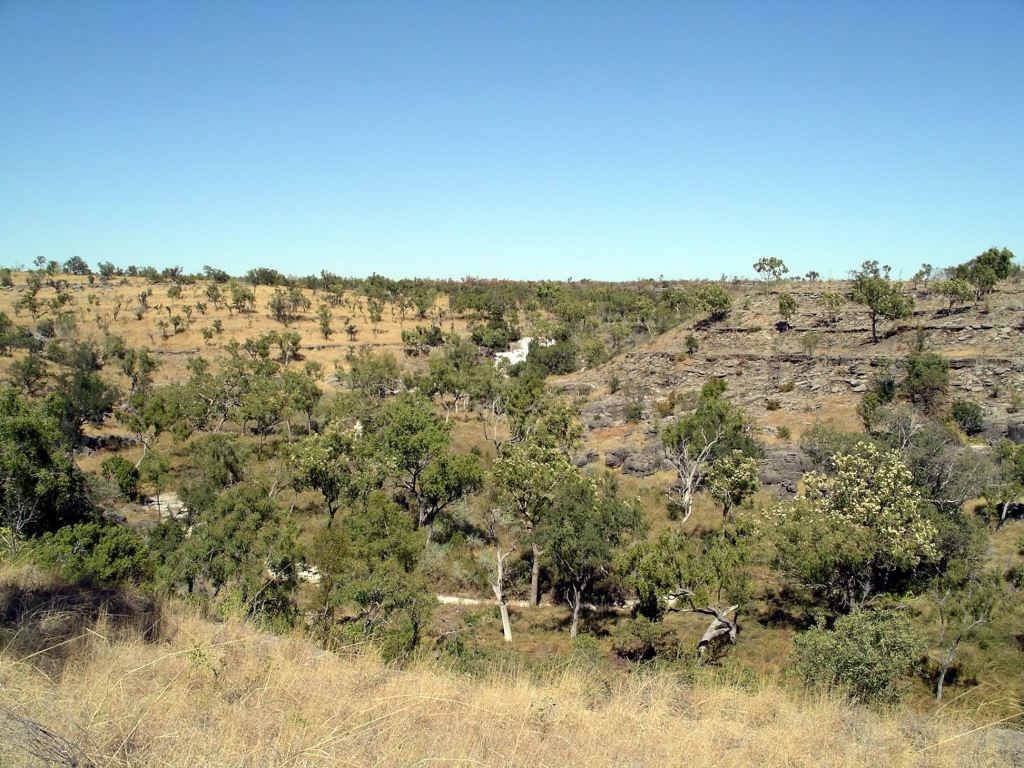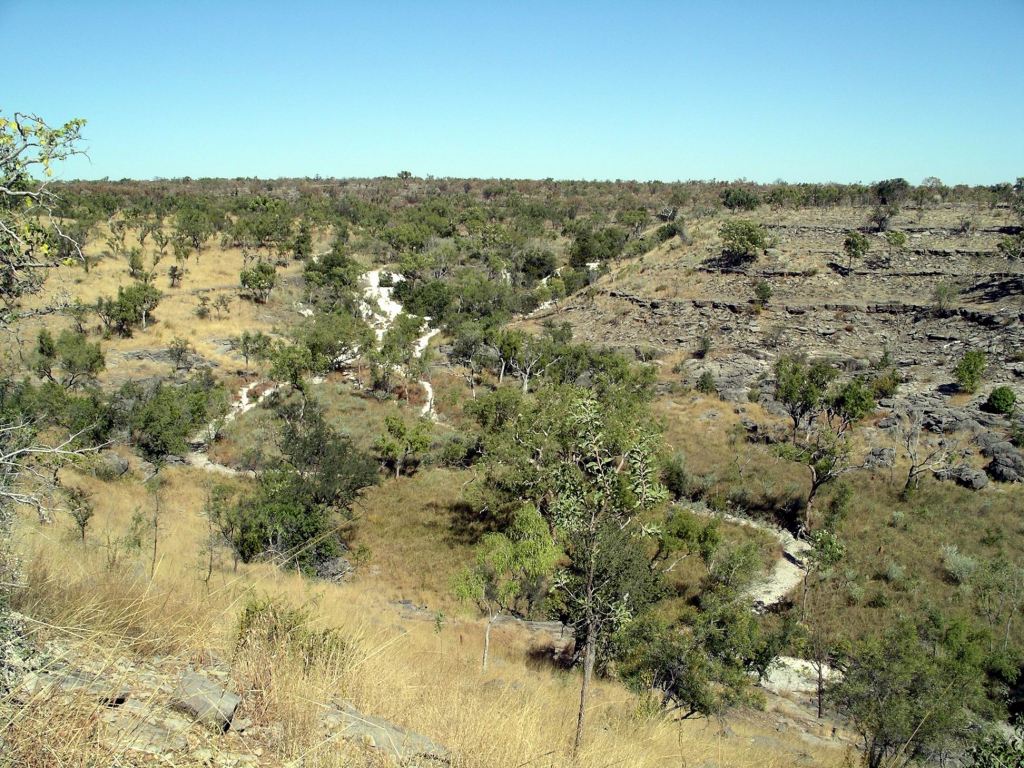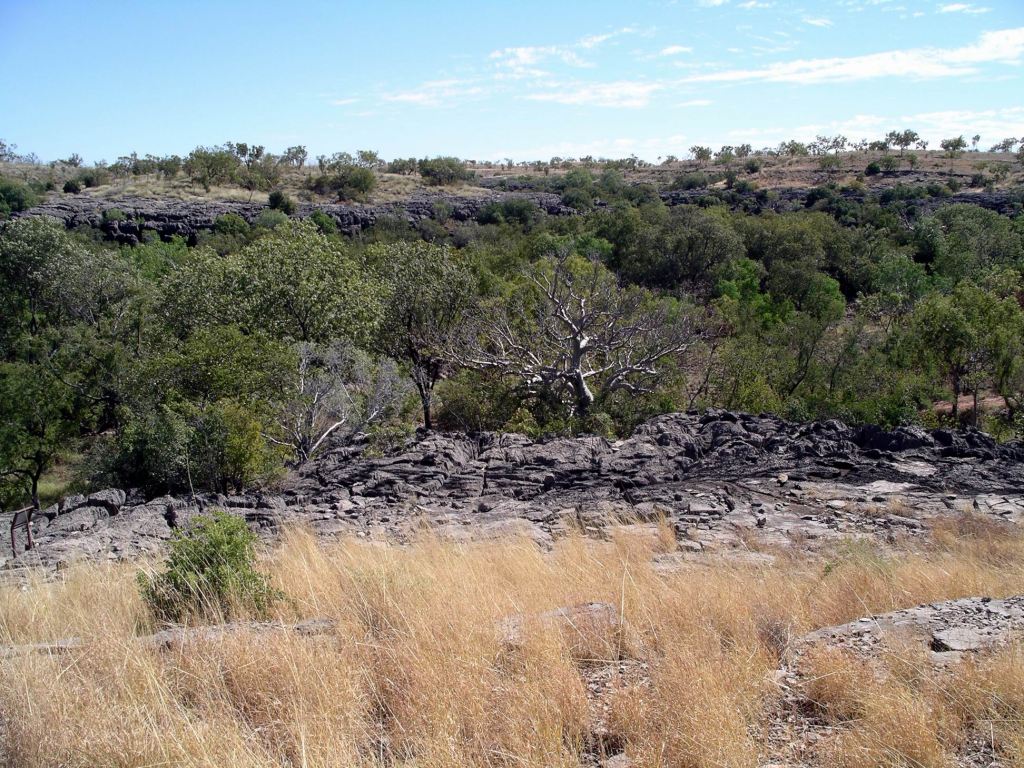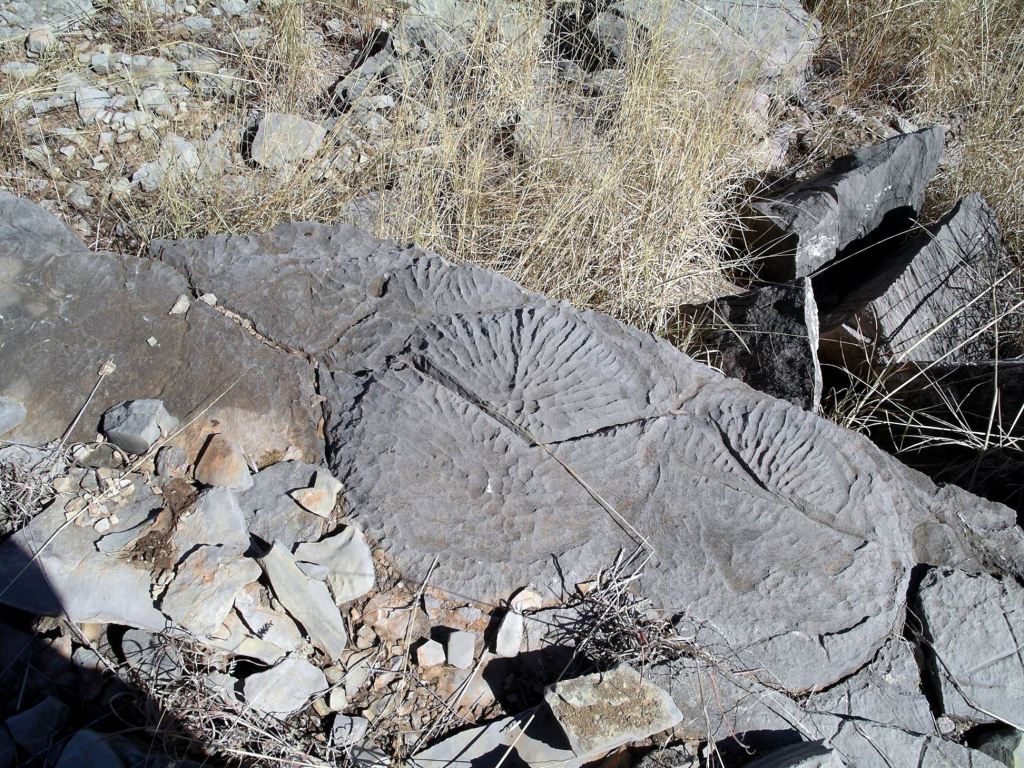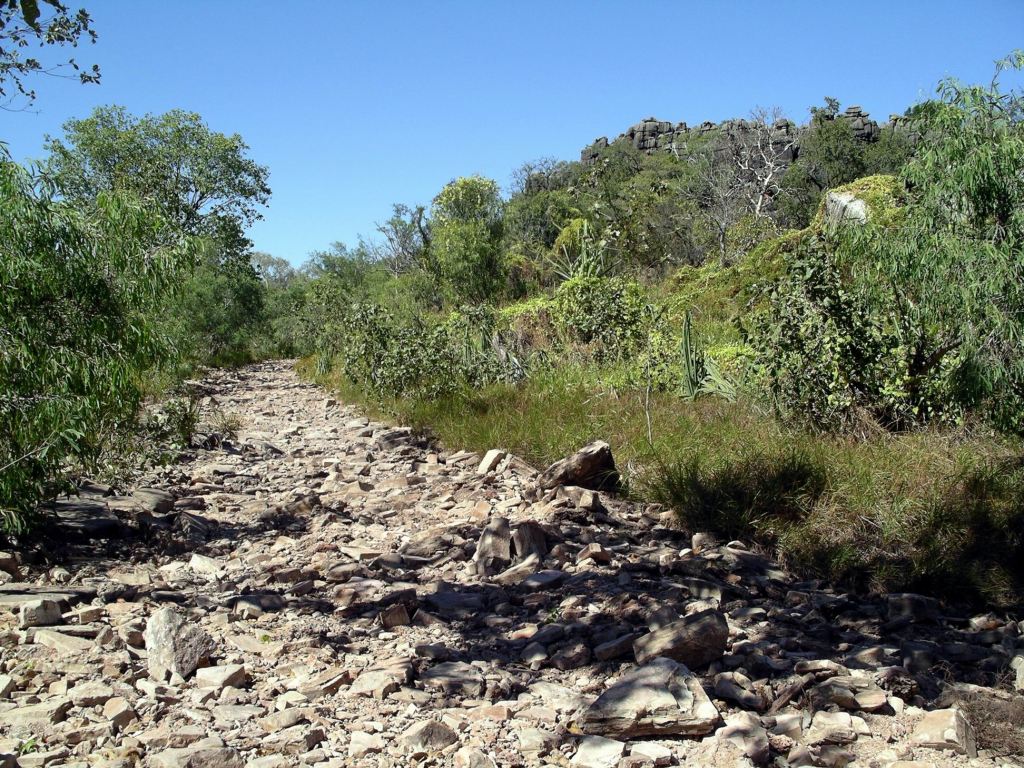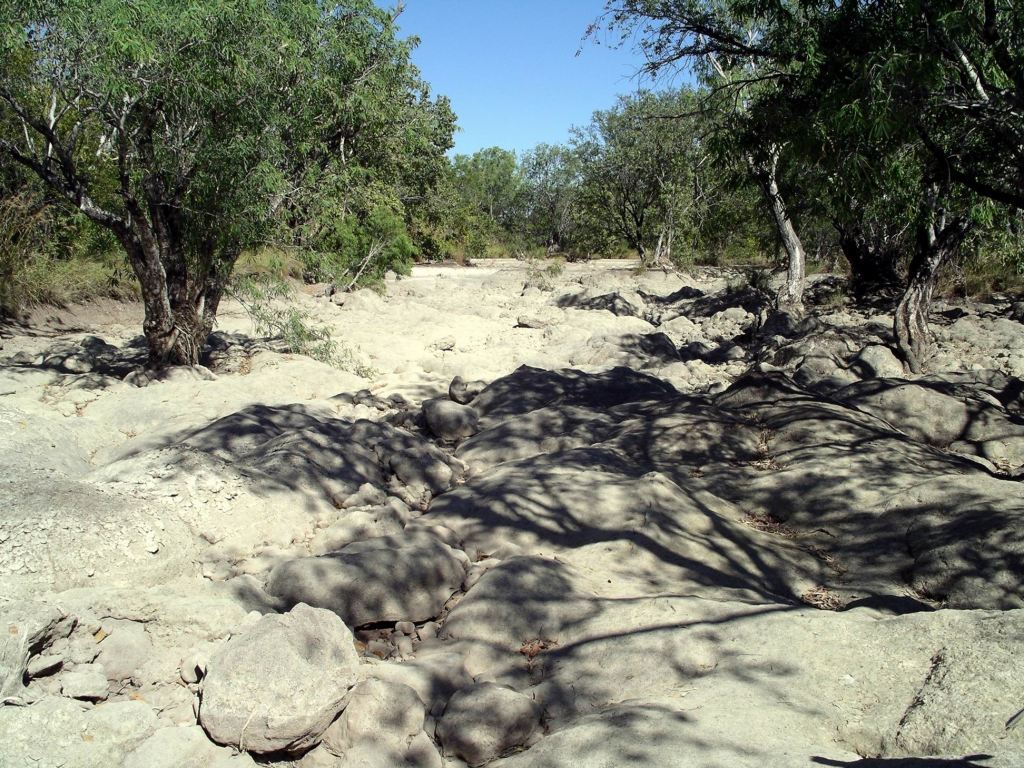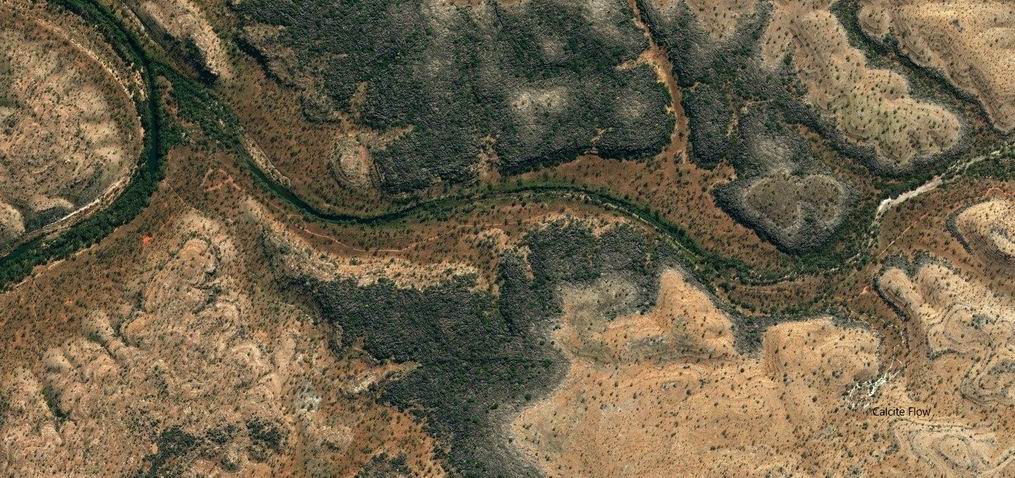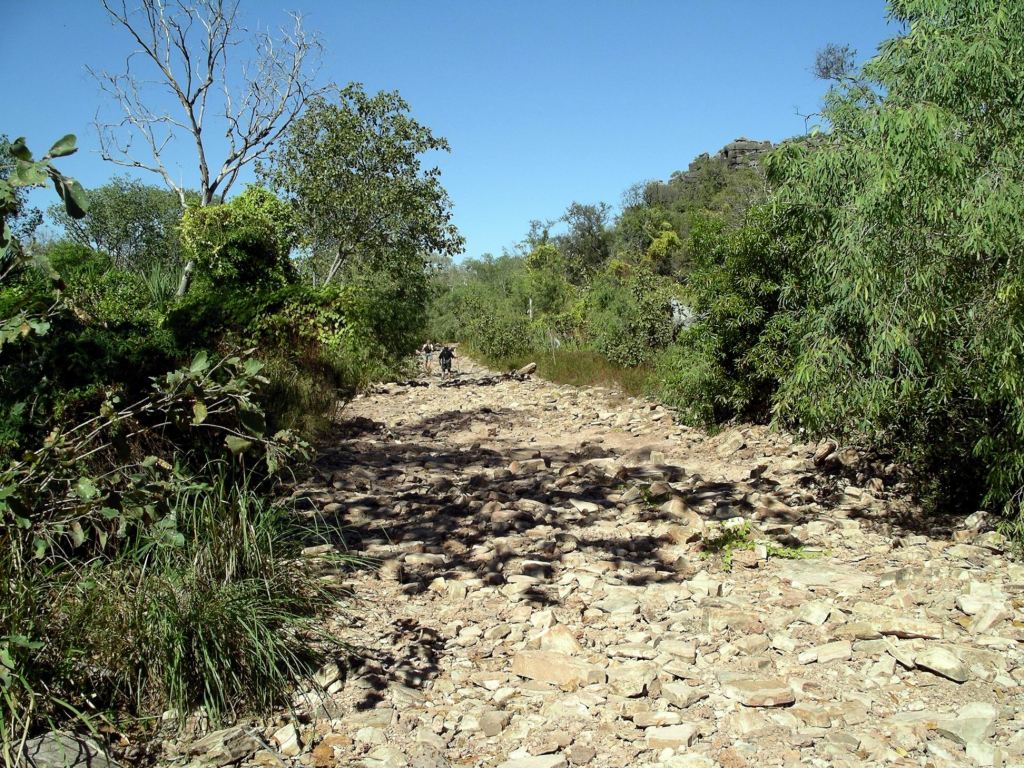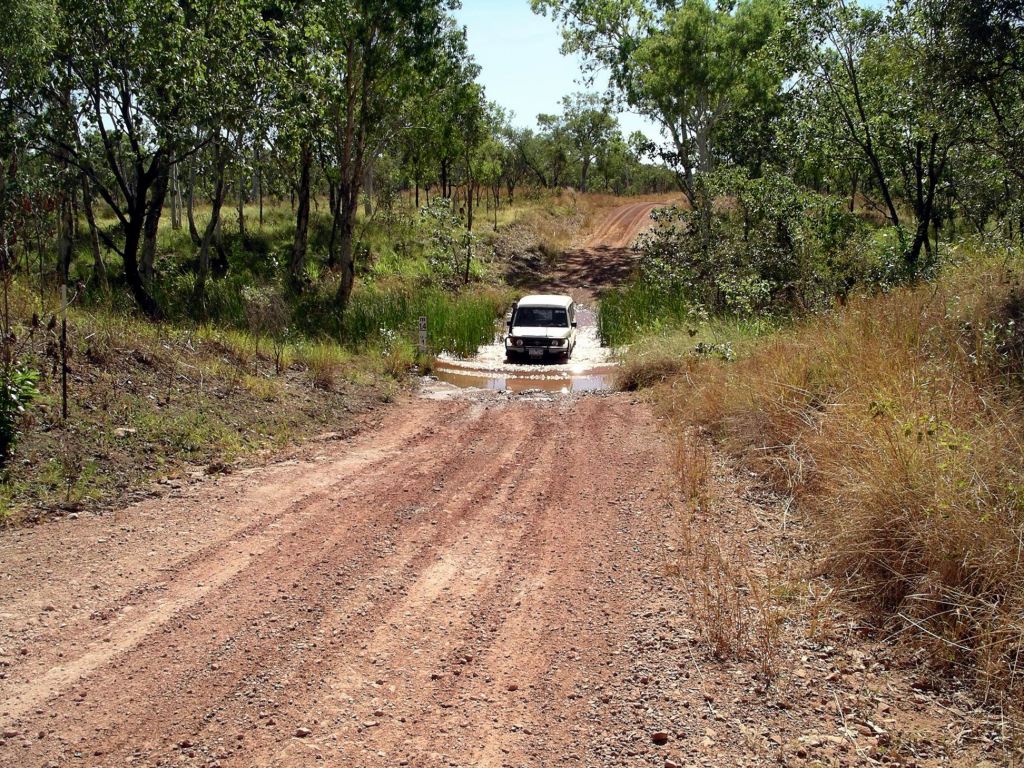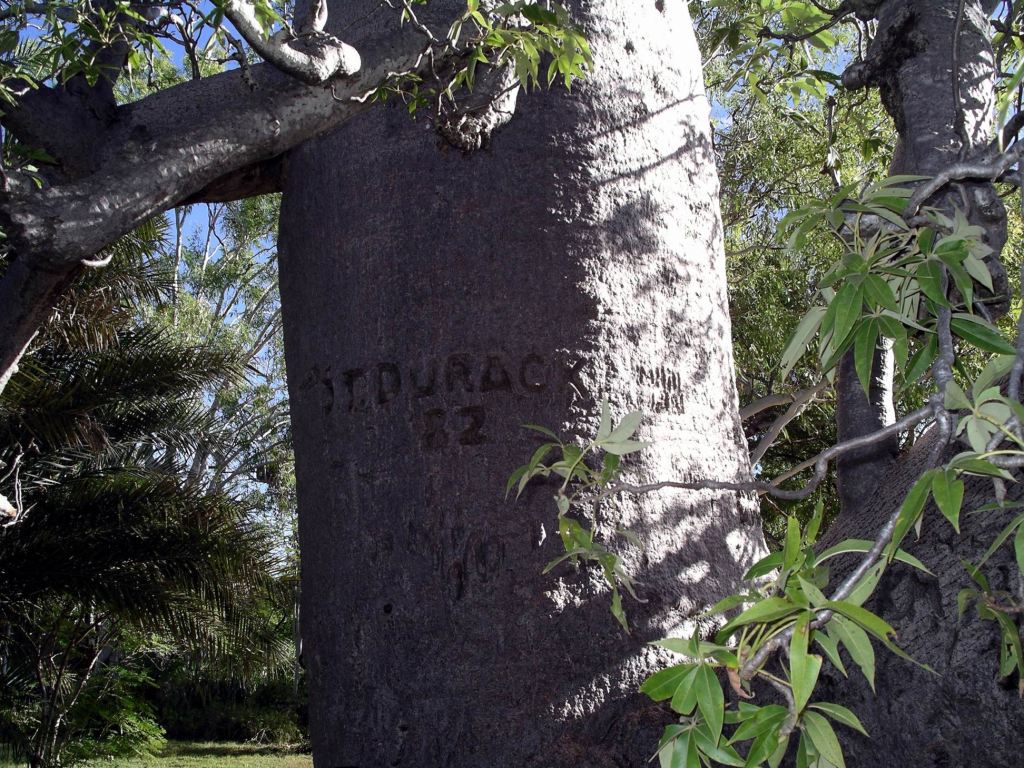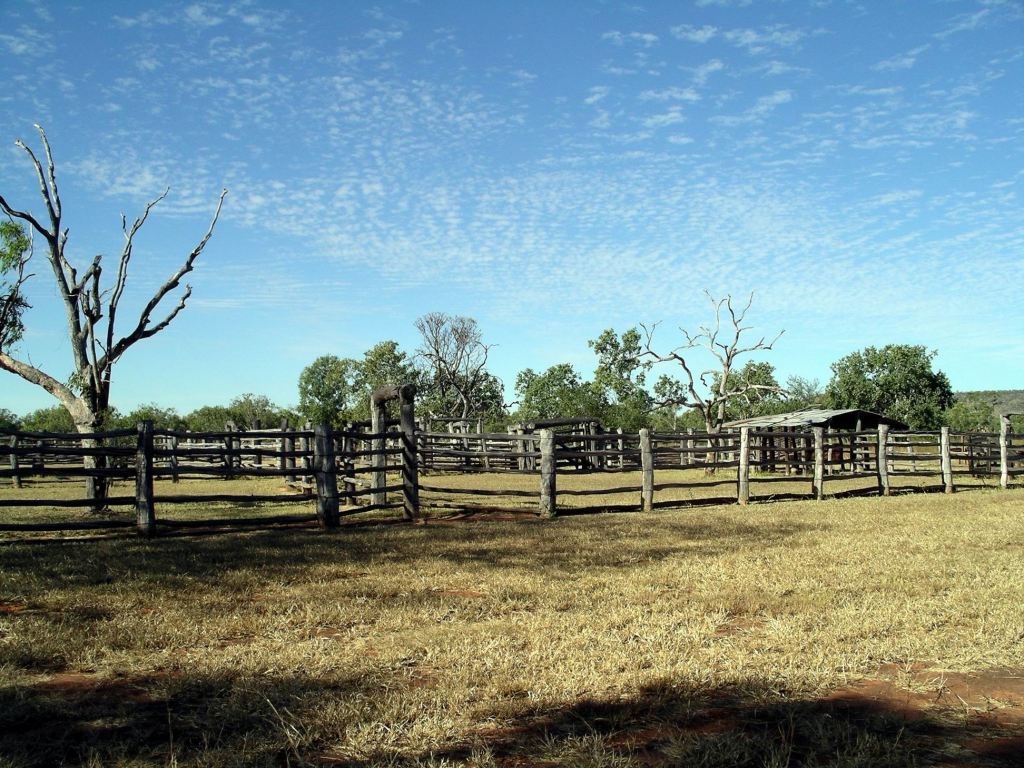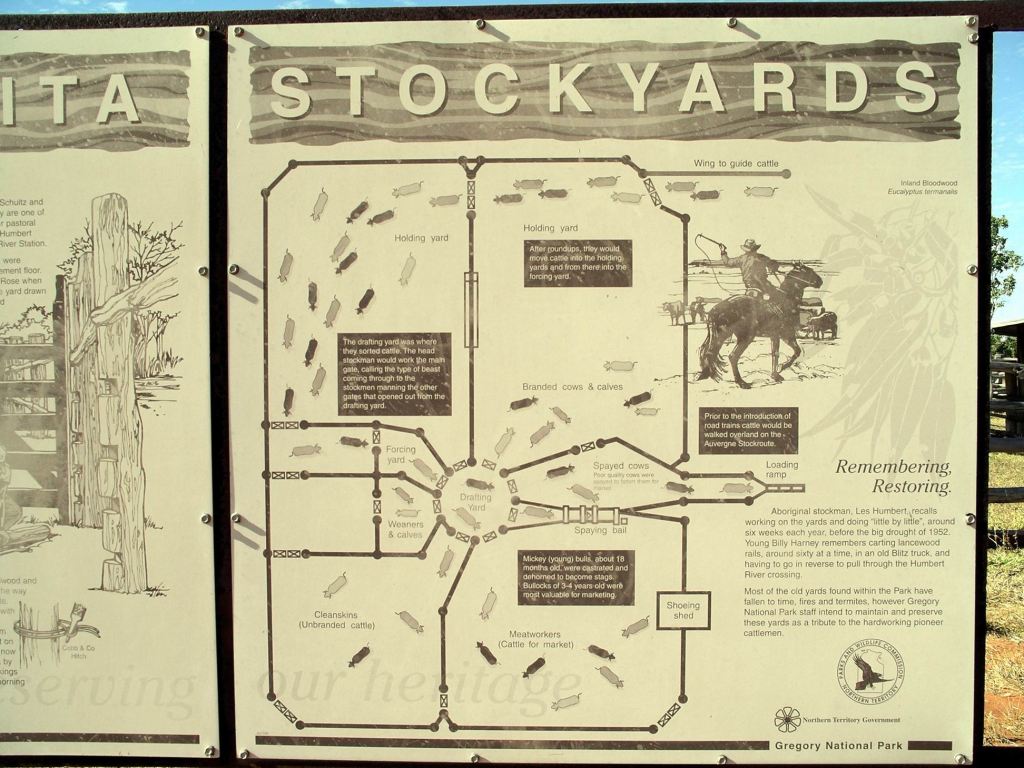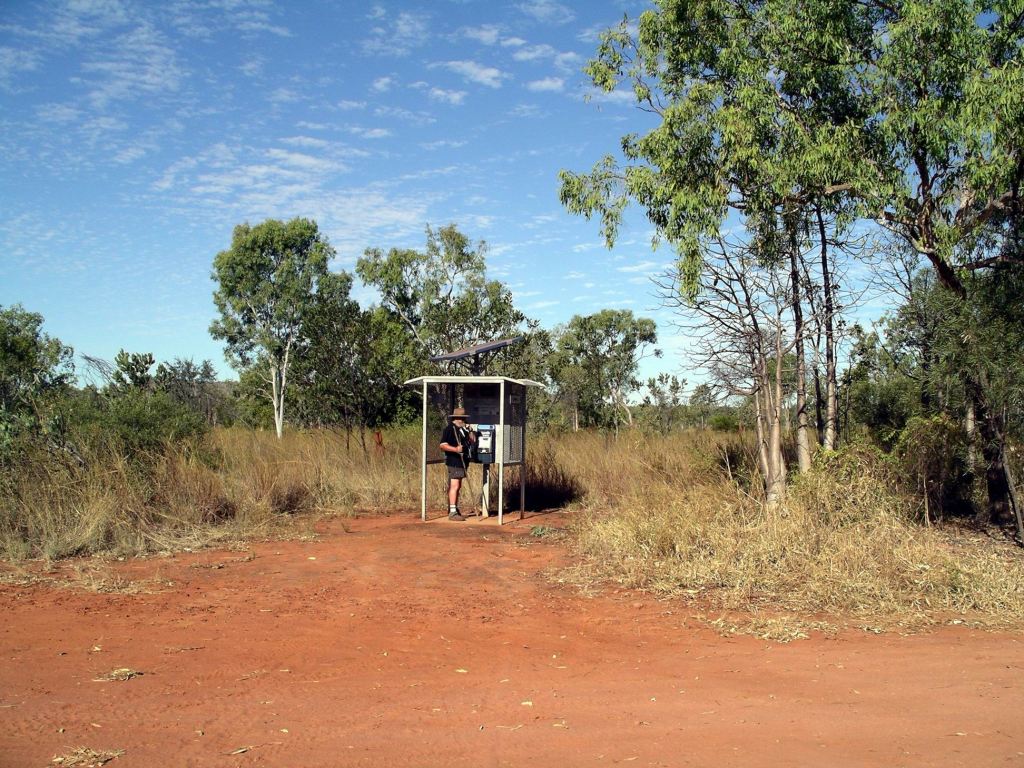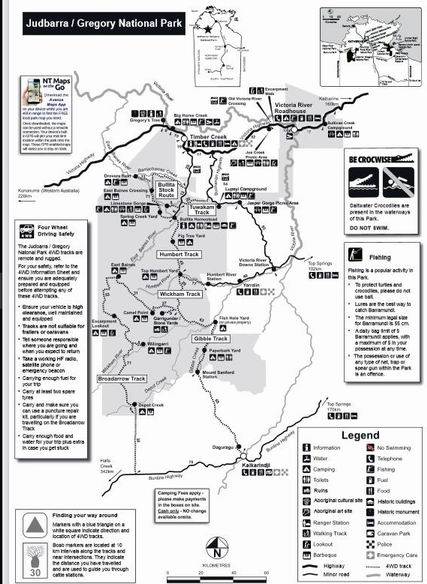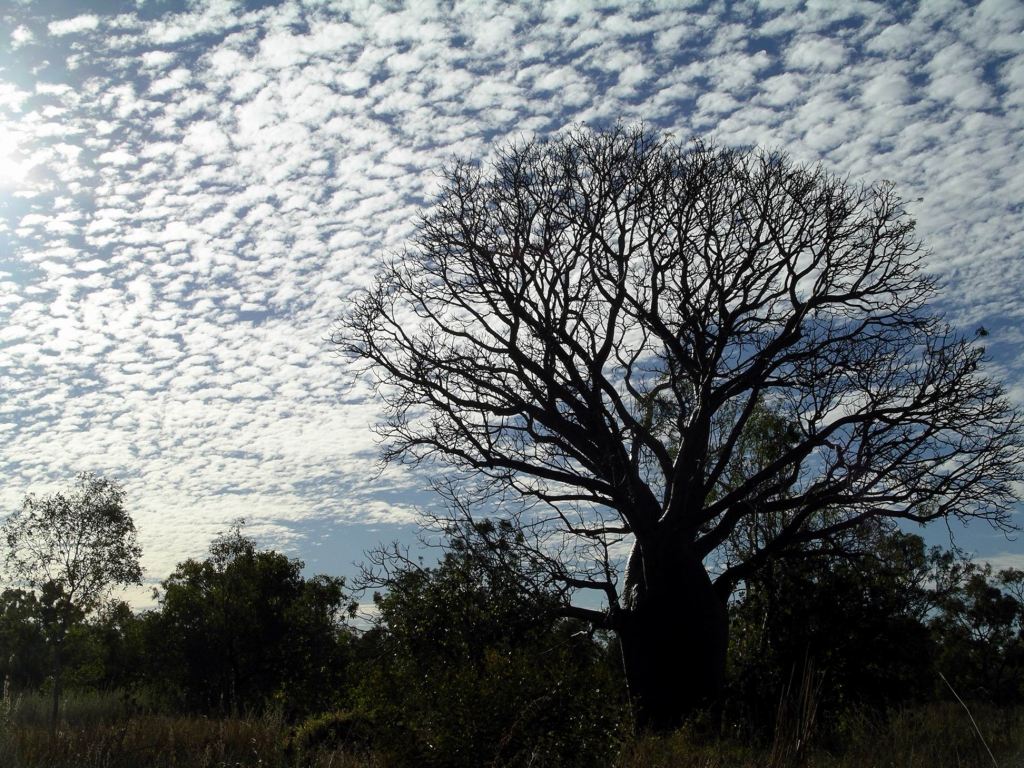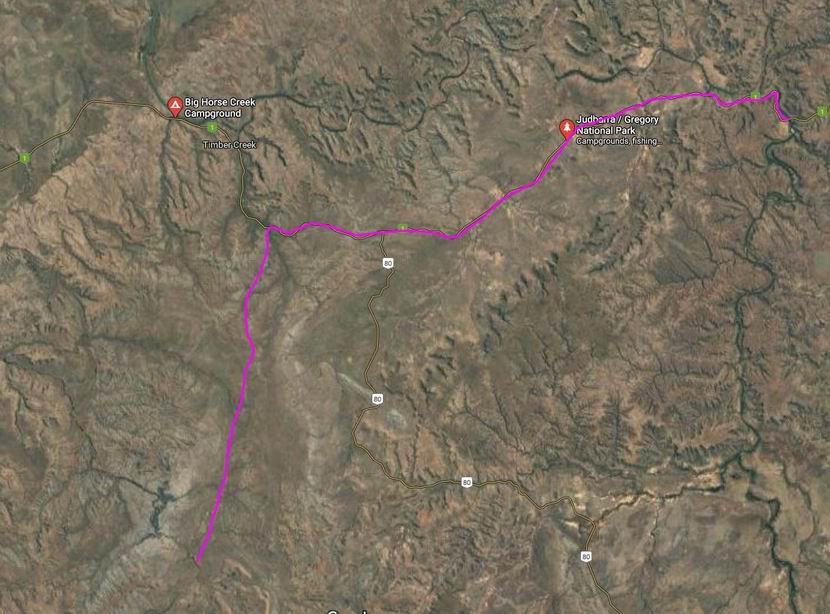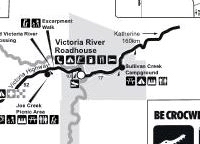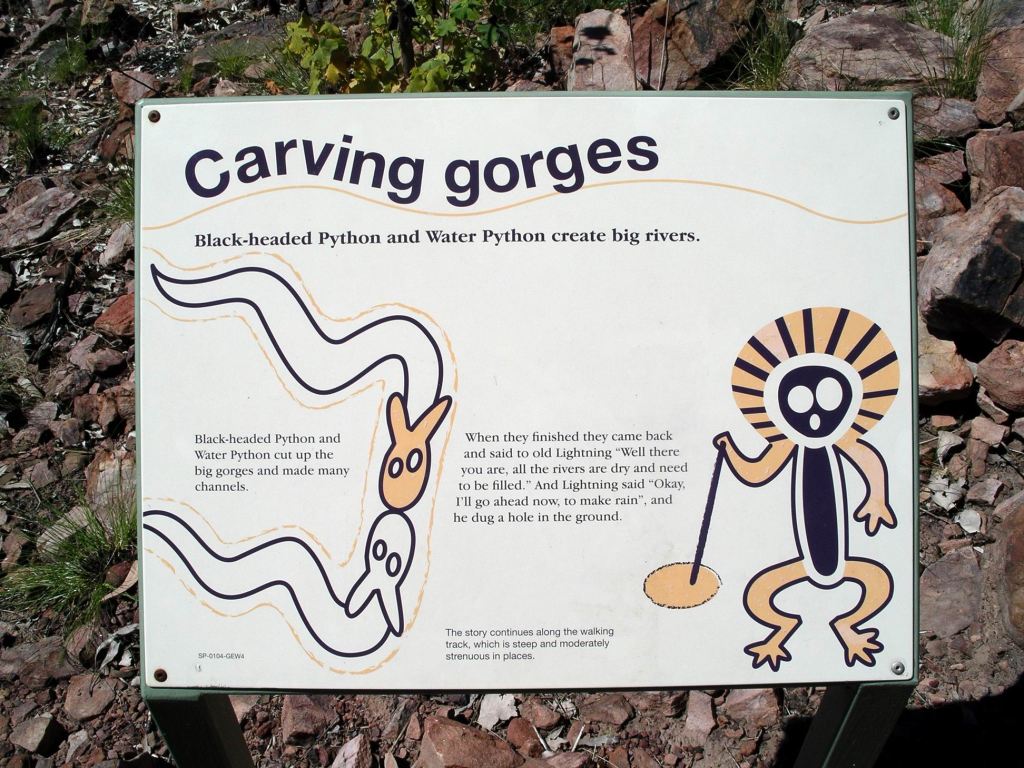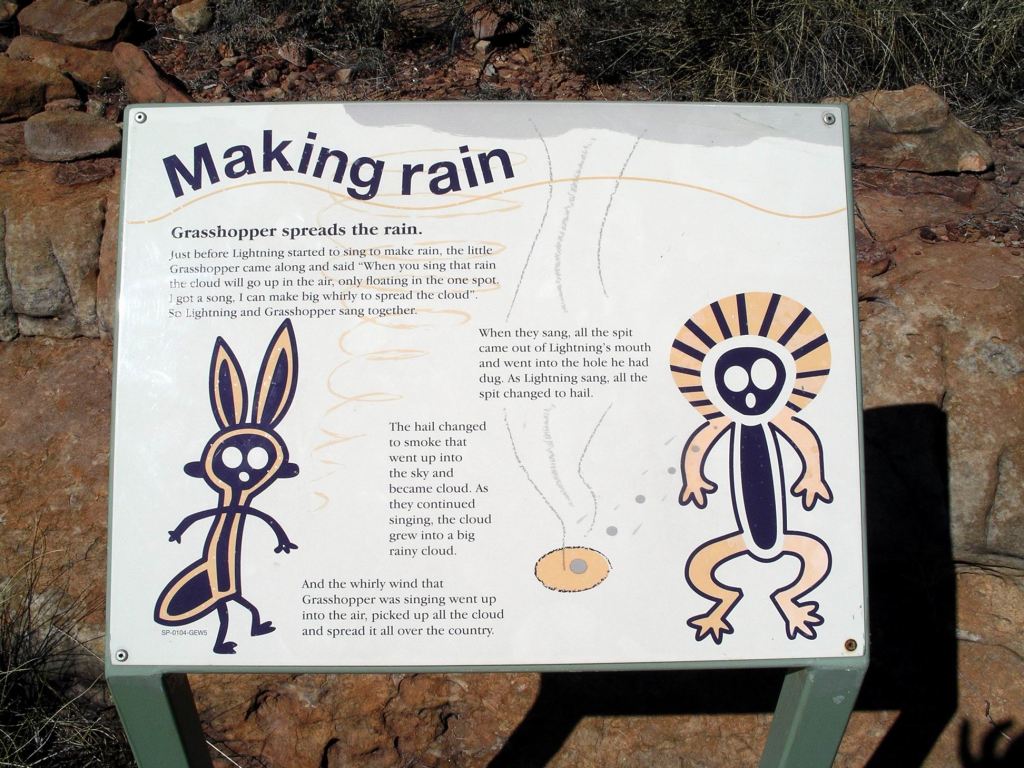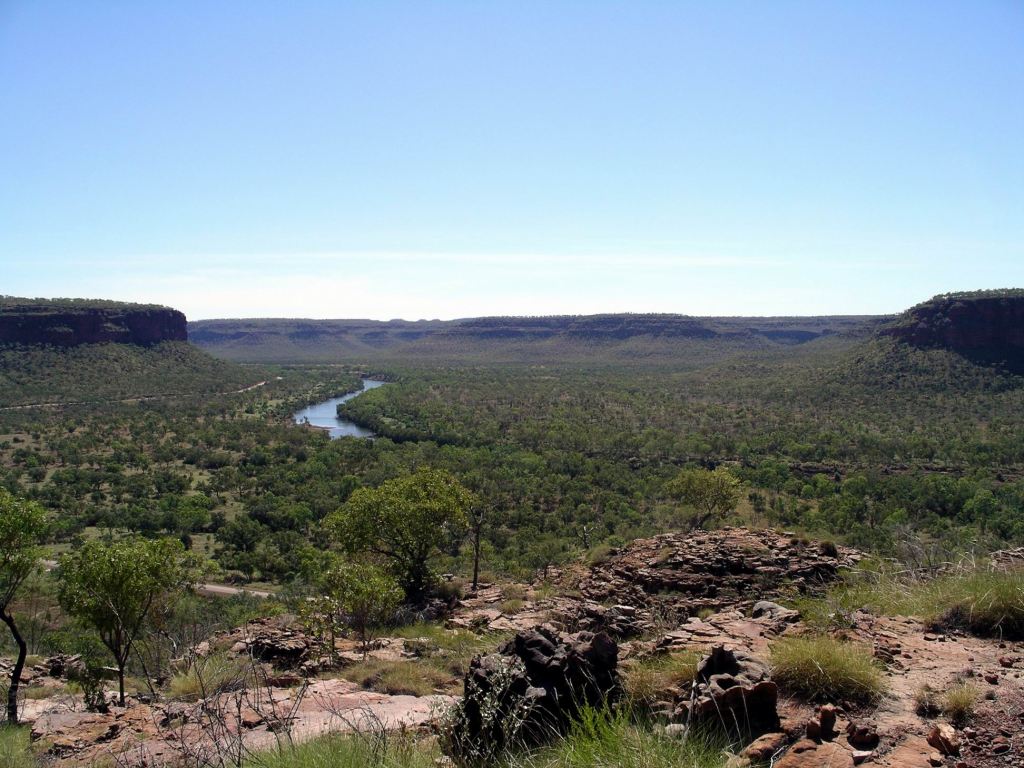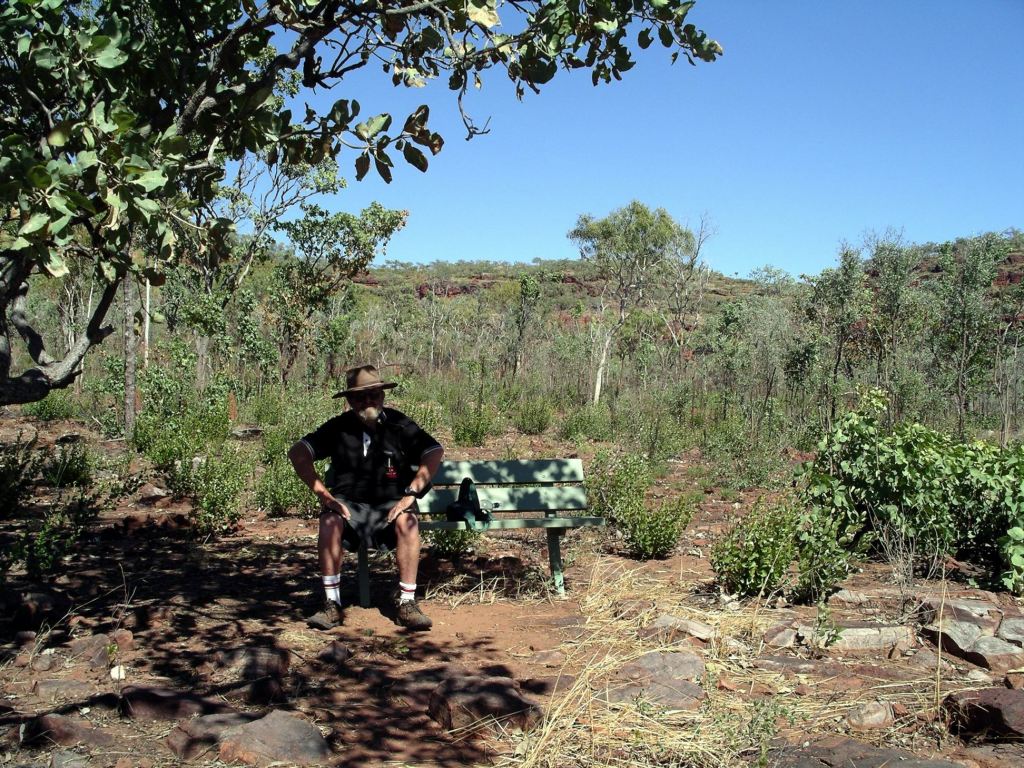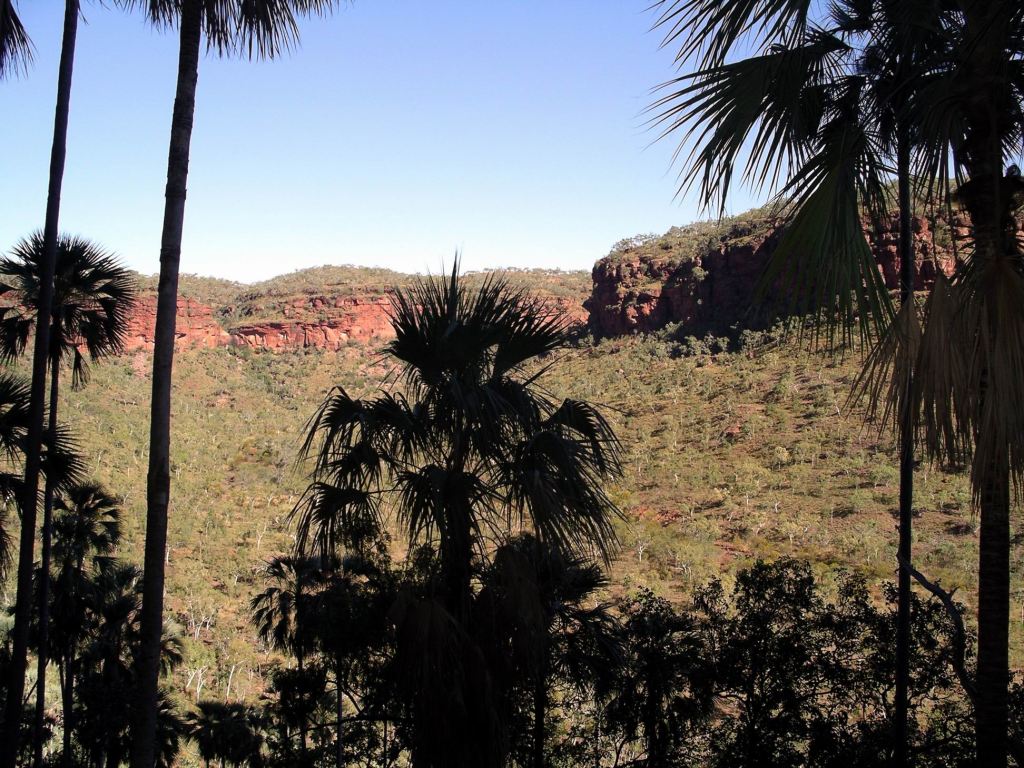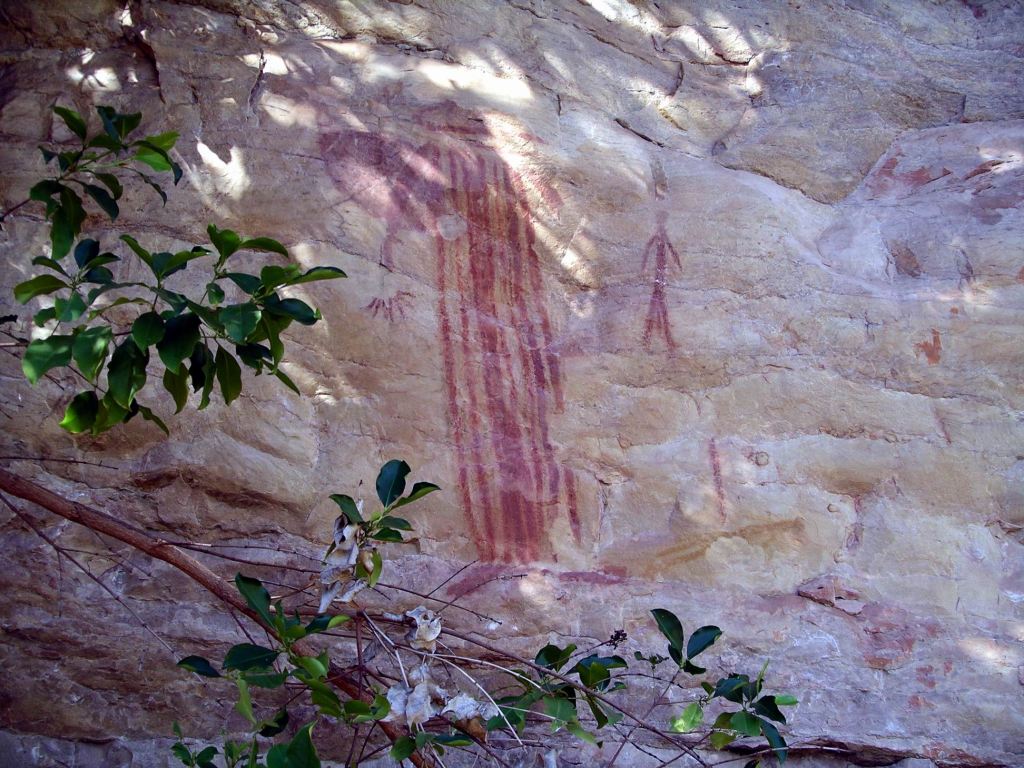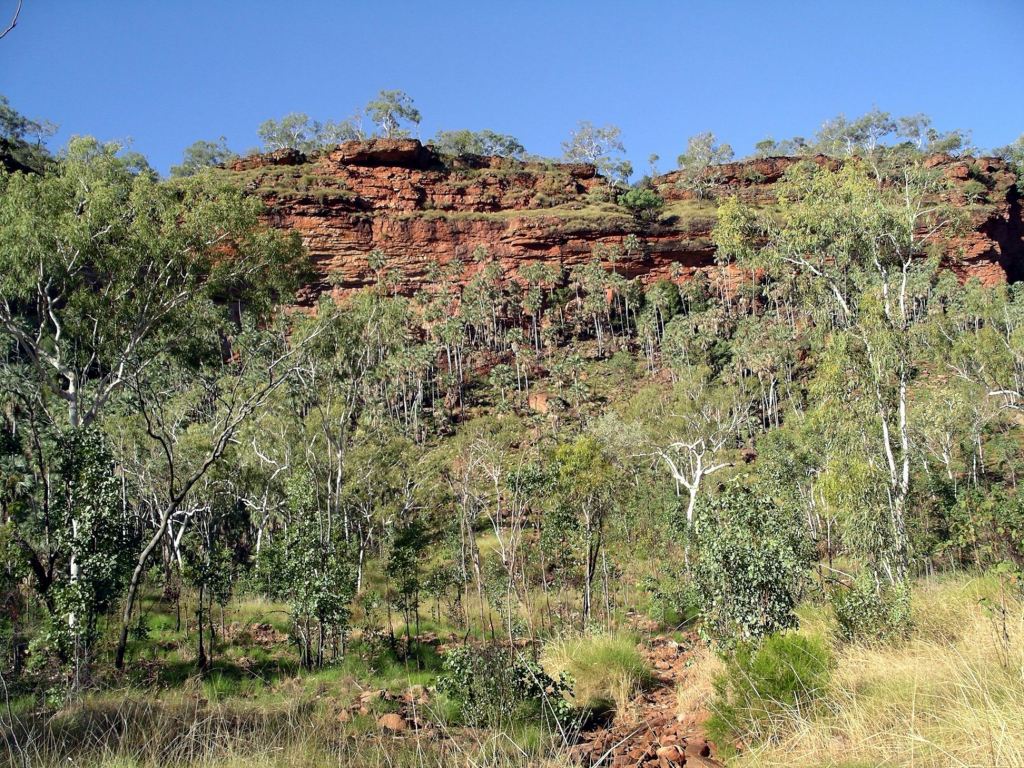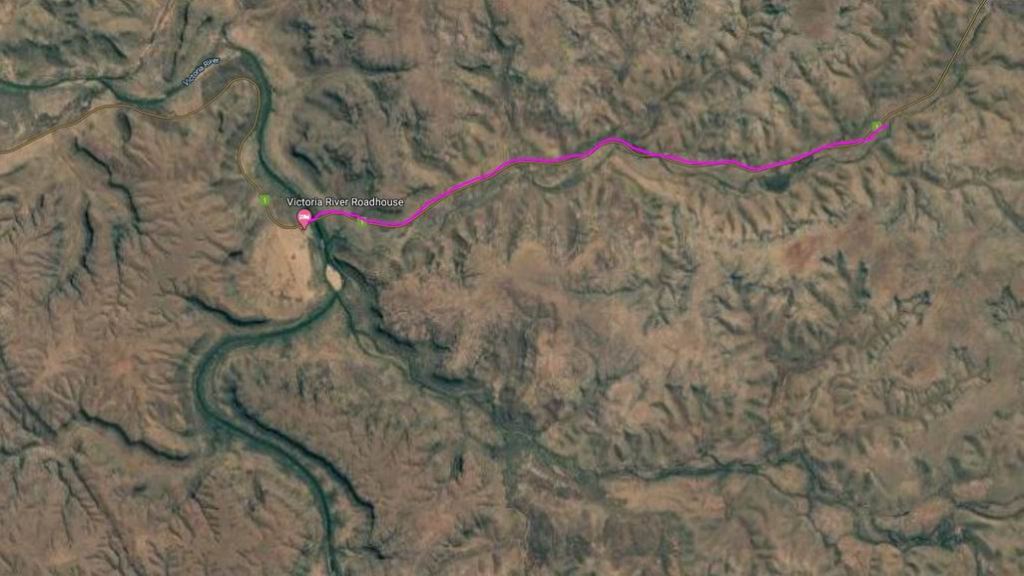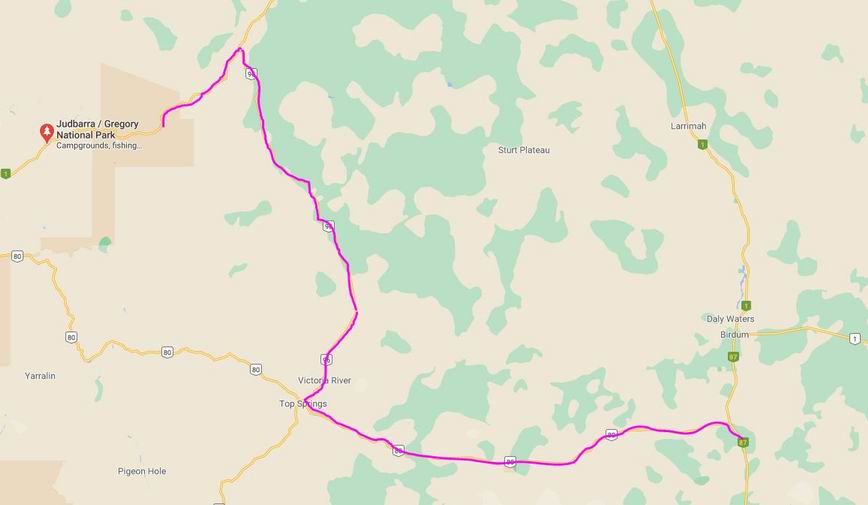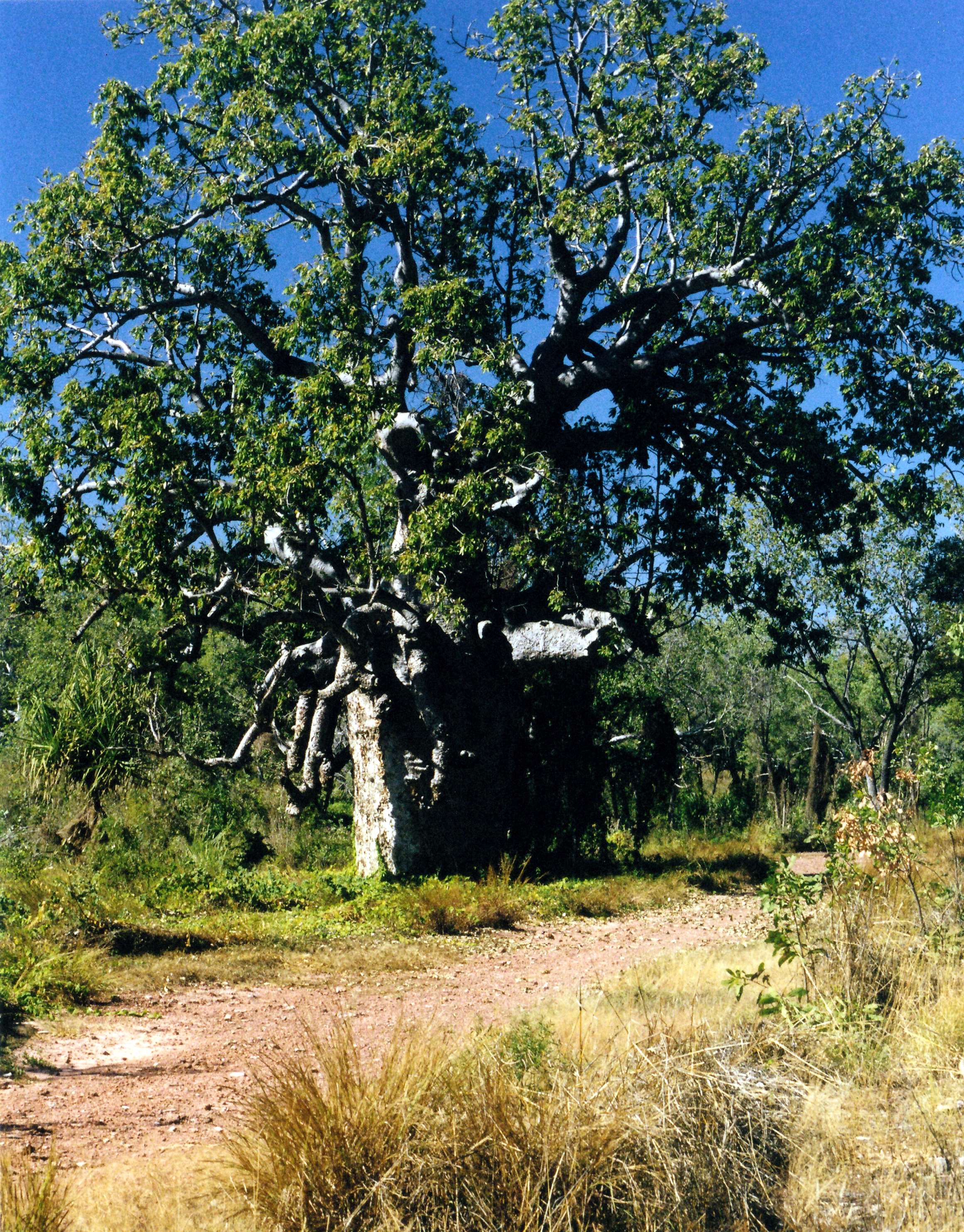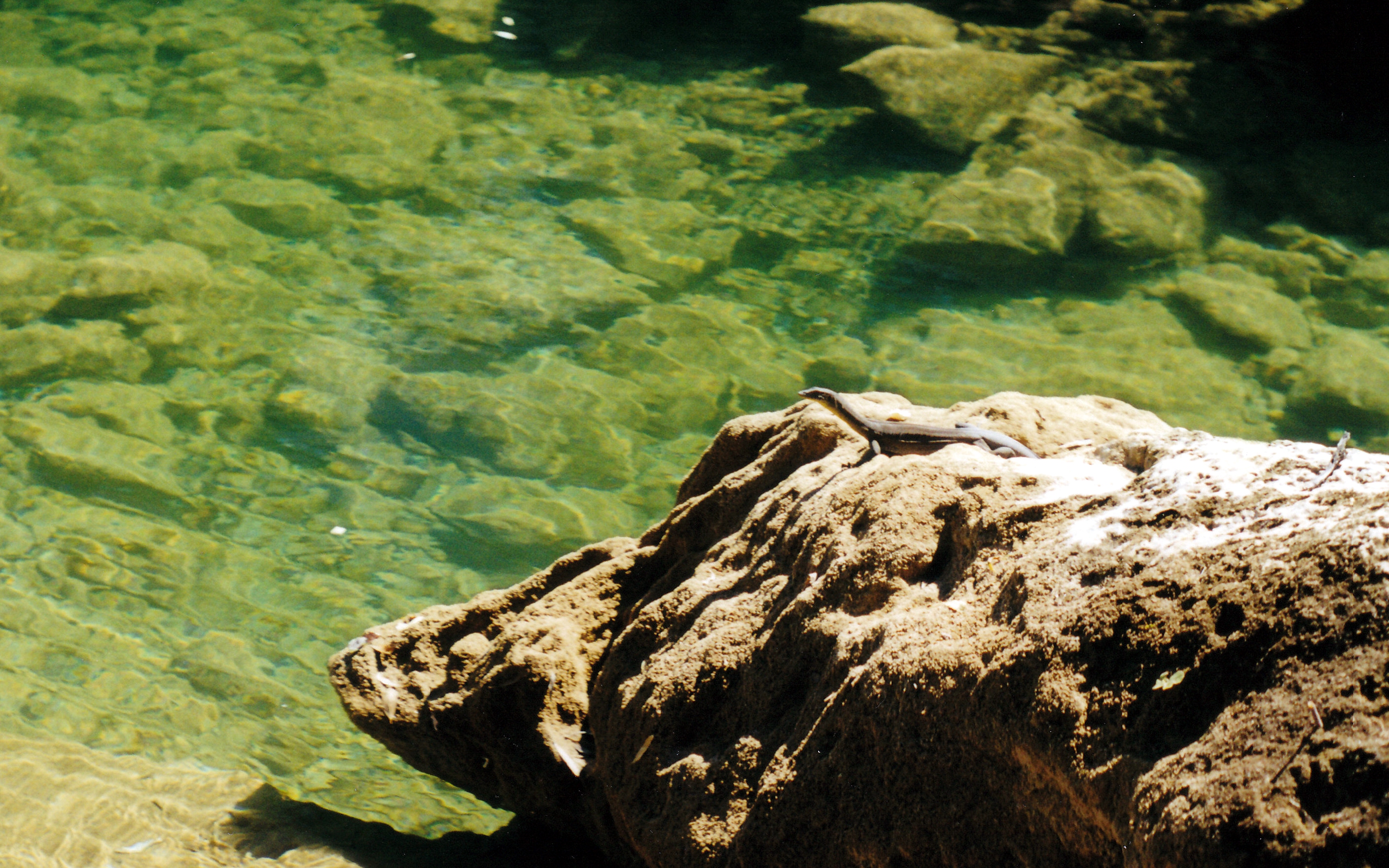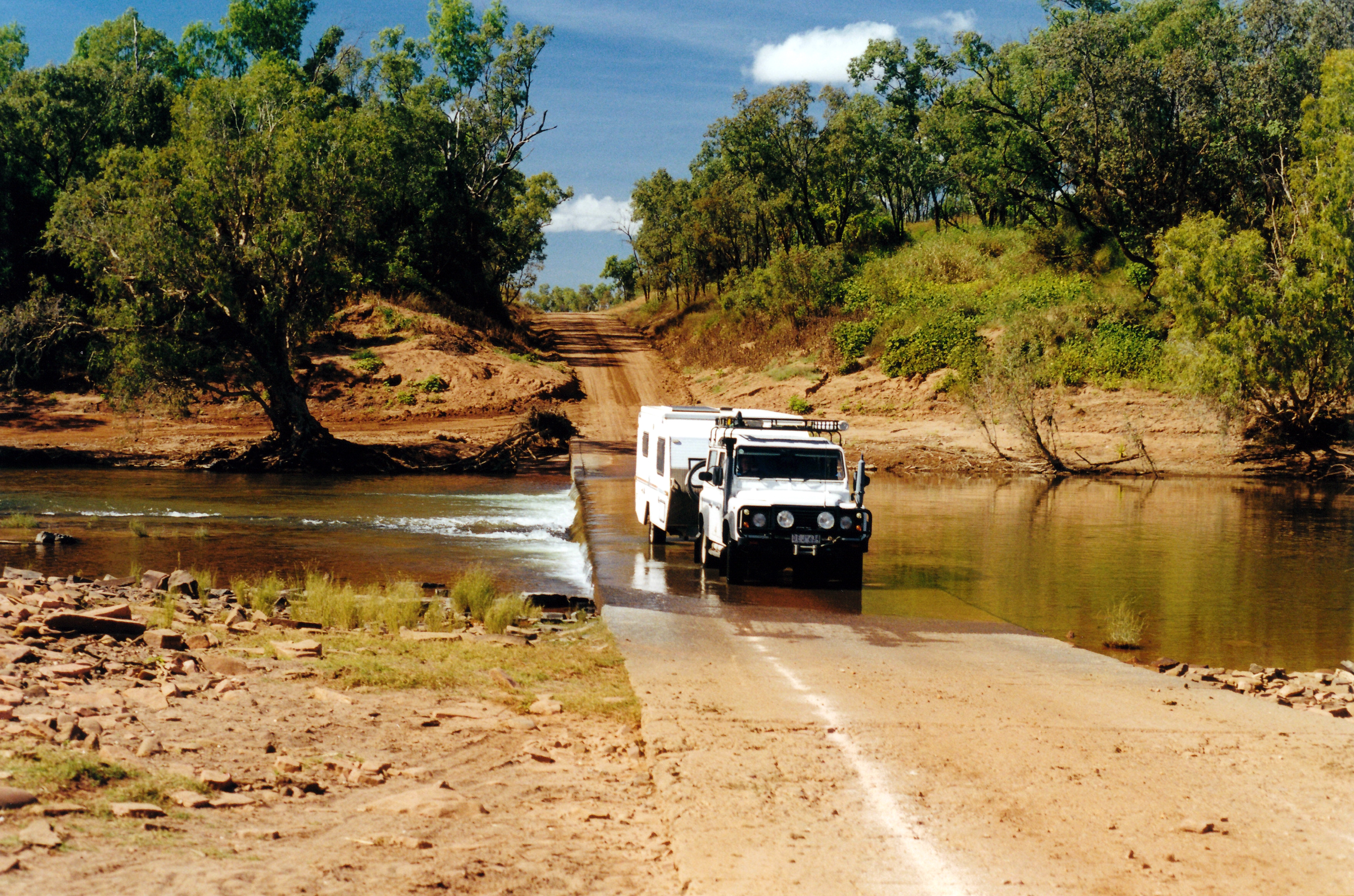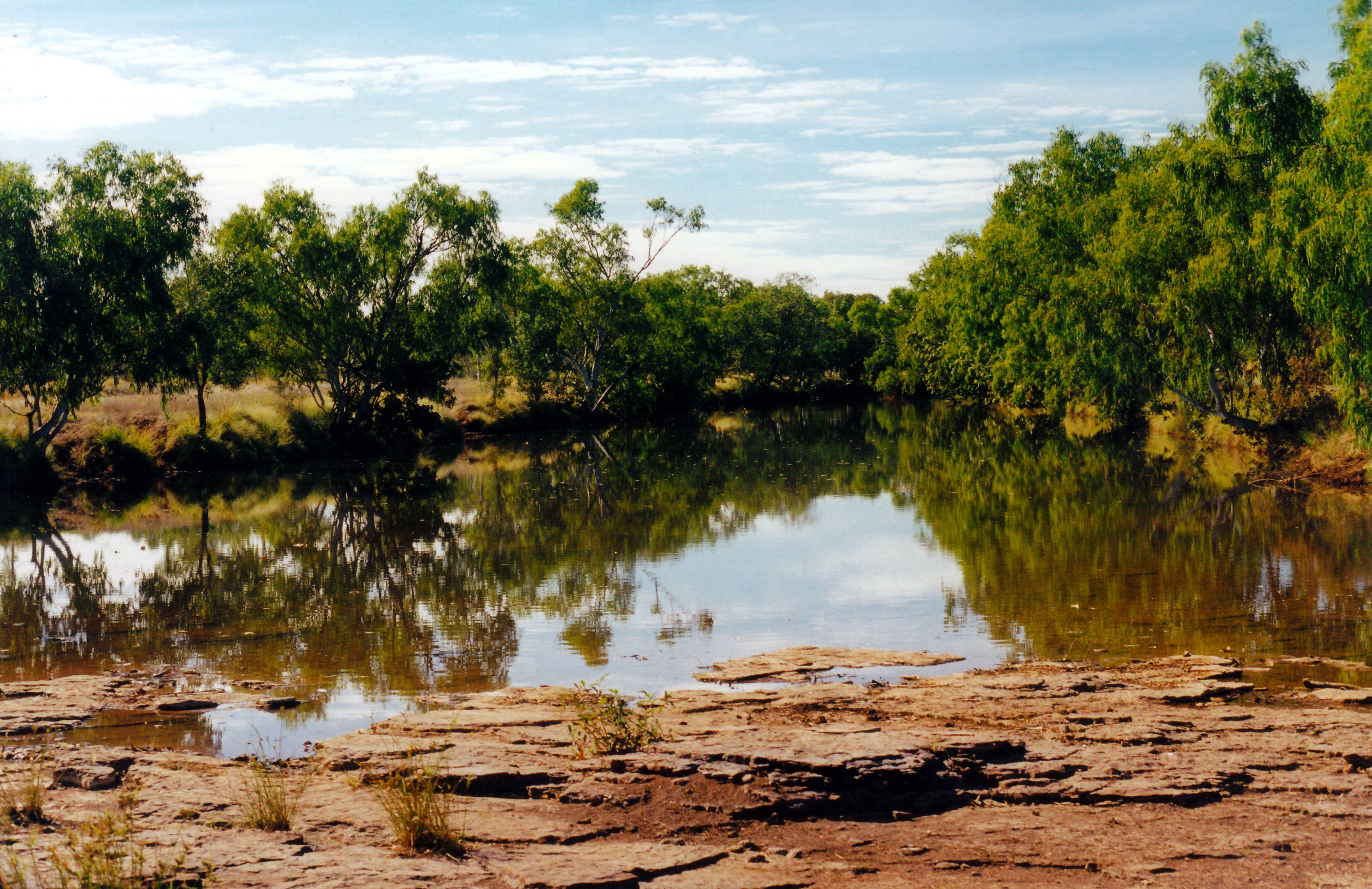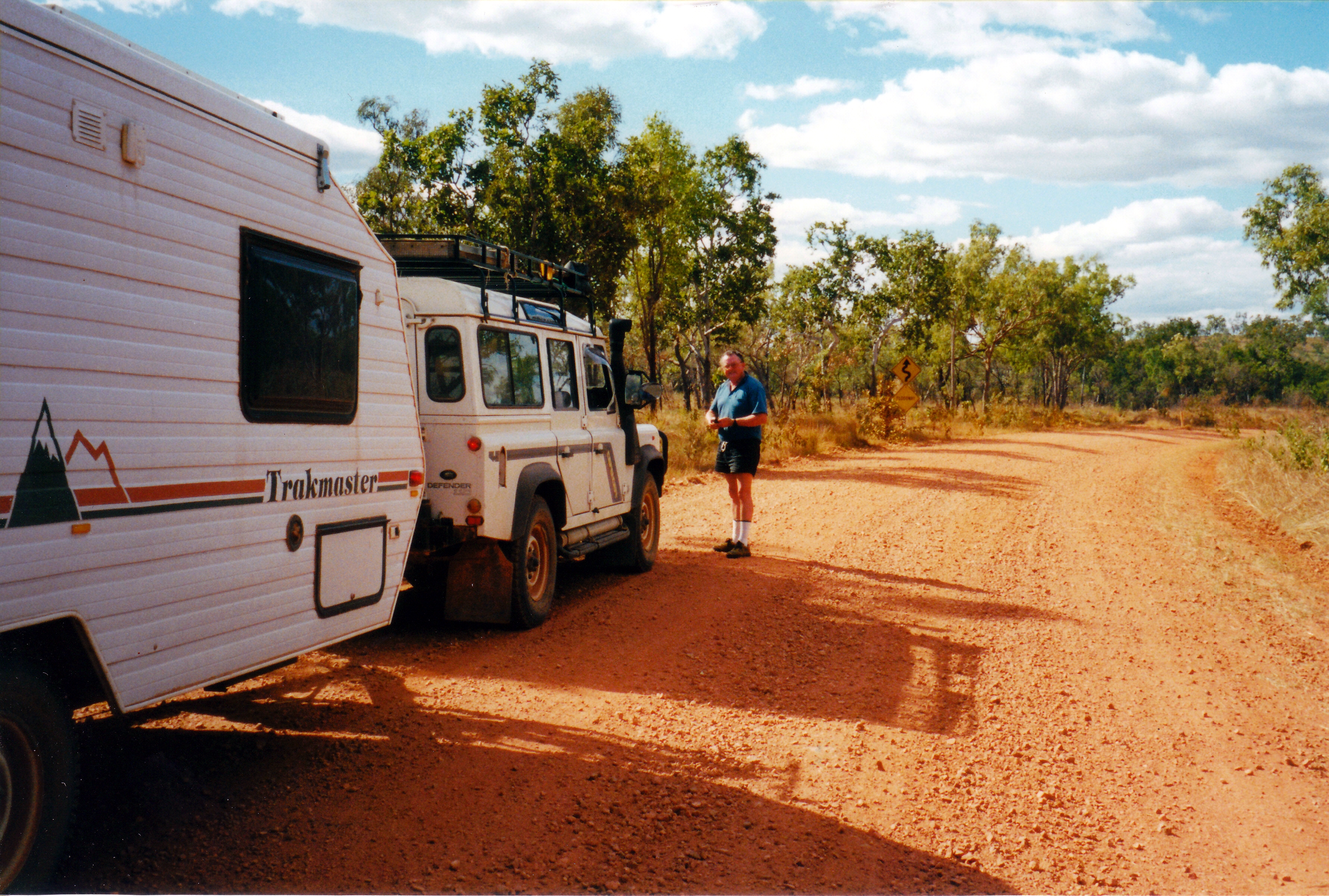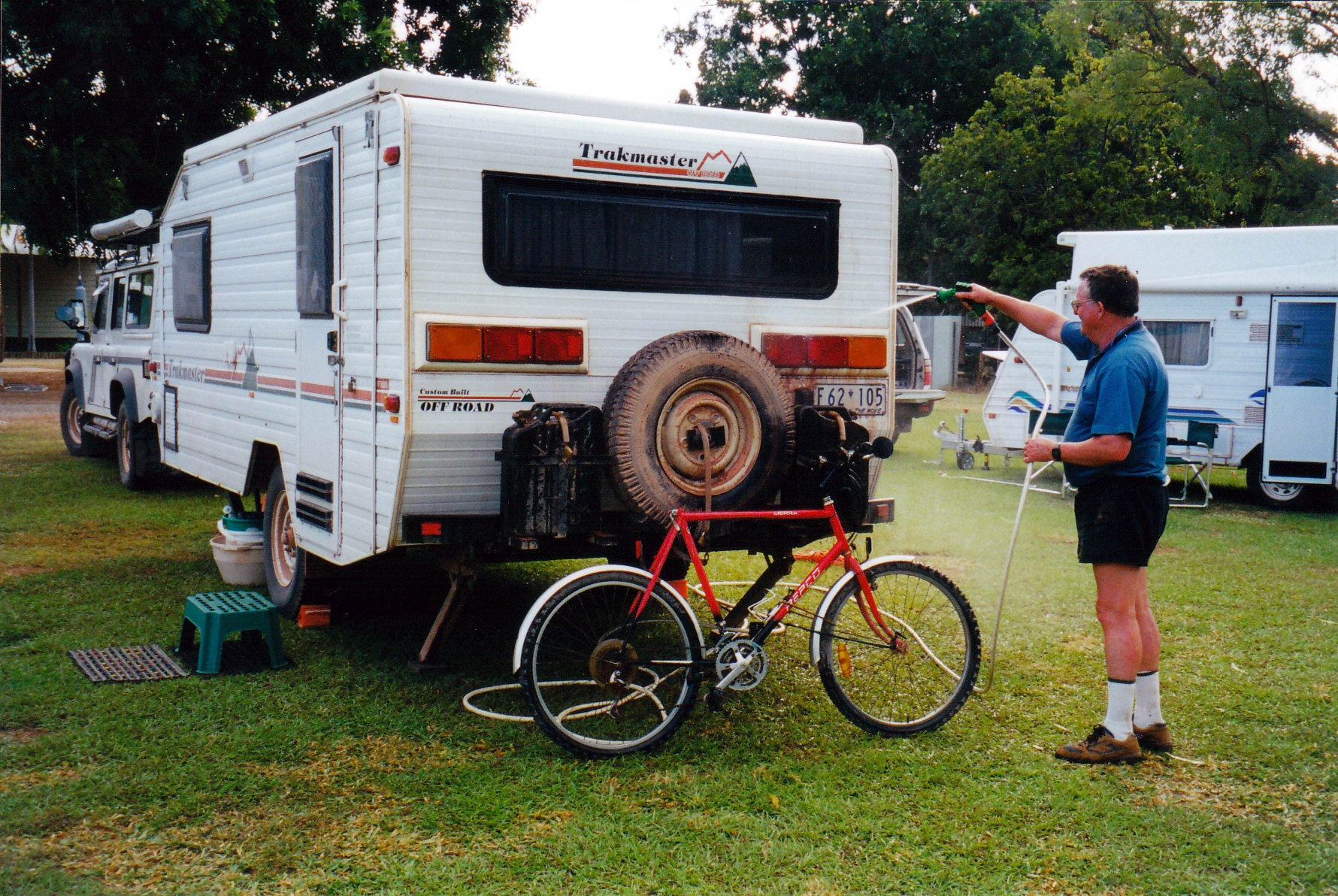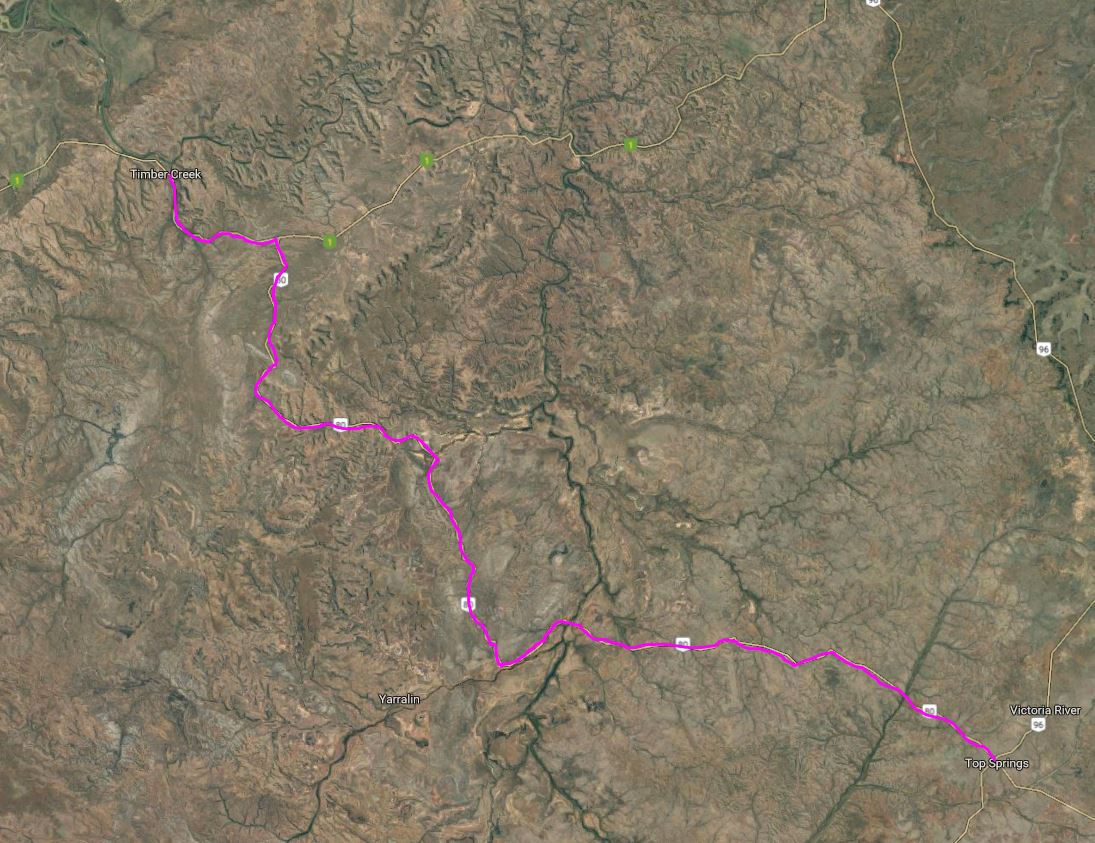THURSDAY 22 JUNE TIMBER CREEK
We got up about 8am. This is the type of campground where most travellers move on after one night, so there was much activity around us, to wake us up.
After breakfast, I went to the general store – part of the roadhouse complex – for bread. While I was gone, John got talking to the man on the next site, and helped him back his vehicle onto his van. His wife, whom we’d thought on seeing her yesterday was ill, he says is losing her sight and balance; this trip is for her. Of course, there is much that she can’t do, so he doesn’t either.
We went to the National Parks Office, here, and collected information about Gregory and Keep River National Parks.
Drove back along the highway for a few kms, then took the unsealed Bullita road, towards Bullita Homestead, which is 47kms from the highway.
The road was not too bad; there were lots of dips, quite a few with flowing water in. The deepest crossing was probably about 35cm. John stopped briefly in the middle of several crossings to “give the tyres a cool down” – not recommended practice at all, but it gave us views up and down the little creeks.
We spotted two new birds by the track, after getting out of Truck and looking carefully at the movements we saw – both finches: the long tailed and the black faced. There was much other bird life, most of which were familiar varieties. We are getting better at our bird remembering.
About 40kms down the Bullita road, the turnoff to Limestone Gorge was on the right, and we took that. The Information Board at the start of this said that it was closed beyond the Calcite Walk park area, due to washouts. When we got to that point, some 6kms along, there was a closed gate across the track.
We left Truck parked there and did the 600m Calcite Walk. This took us to a valley where the limestone formations looked like a white waterfall.
There were occurrences of stromatolites in places. The layered limestone outcroppings on the valley walls were most unusual. I loved the boabs scattered across the slopes. In all, a most interesting and enjoyable little walk.
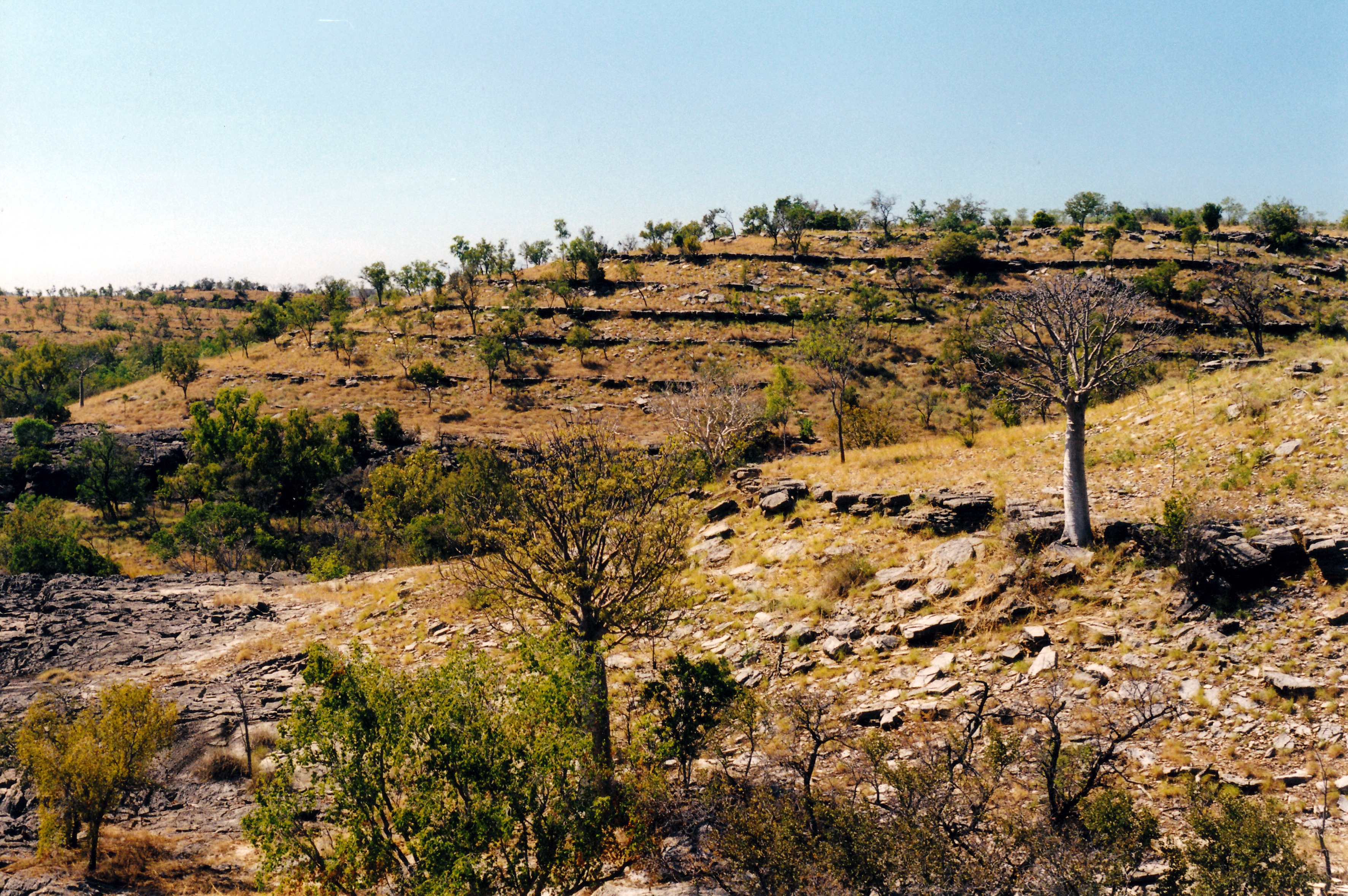
Rock layers created an interesting terraced effect on the hillside
We encountered another traveller who told us that a grader driver had told him you could fish in the potholes in the closed section of the Limestone Gorge track.
We set out to walk to Limestone Gorge – the camp ground there was about 2kms from where we were parked. The closed road really was very badly cut up in a section of a few hundred metres – and there were little fish in some of the larger water filled holes in the road. It was a real mess, and we couldn’t see it being easily or cheaply repaired.
There were some superb old boabs en route.
Stopped to eat lunch just short of the campground, beside the Limestone Creek, near little rapids. We were amused by a water monitor sitting on a rock and watching us carefully. He was about half a metre long. Eventually he took to the water, but then crept around in a big circle behind us – cunning fellow!
We walked on to the campground. This would be a really pleasant place to stay, were it accessible with a vehicle.
From the campground, we decided to do the Limestone Ridge walk, since we were here. This was a 1.8km loop that was signed as taking one and a half hours, but we found it hot and exposed, and did not dawdle, so it took us 45 minutes. It gave great views over Limestone Gorge – quite impressive.

Limestone Gorge, seen from the Limestone Ridge walk track
We had ample water with us, which was good, given the heat of the middle of the day.
In all we walked for two and a half hours, over nearly 6kms and were stuffed by the time we got back to Truck. Our systems have become unused to exertion in real heat.
We then drove back to the Bullita Track and down to the Bullita Homestead area. We looked at the camp ground there, which would also be a pleasant, quiet place to stay – just a basic, National Park camp area. There was no one else there.
The Bullita Stock Route circuit drive starts there, with a crossing of the nearby East Baines River. We looked at this – with the river level quite high and the exact route through the river rather vaguely marked, it did not look a pleasant prospect. There was no way I would be wading that river to check the way – this is real croc country!
It was getting quite late, so we did not stop to explore the old homestead area itself.
Returned to Timber Creek the way we’d come, getting back near dark.
A shower was very welcome after all the hot and sweaty walking.
The night seemed a little less hot and oppressive. Maybe we were beginning to acclimatize? The occasional small breeze that wafted over was lovely.
I couldn’t face cooking the planned sweet and sour pork, so I just cooked up the pork strips with some onion, and John had that with the leftover fried rice. I wasn’t hungry.
We drove 136kms today.
